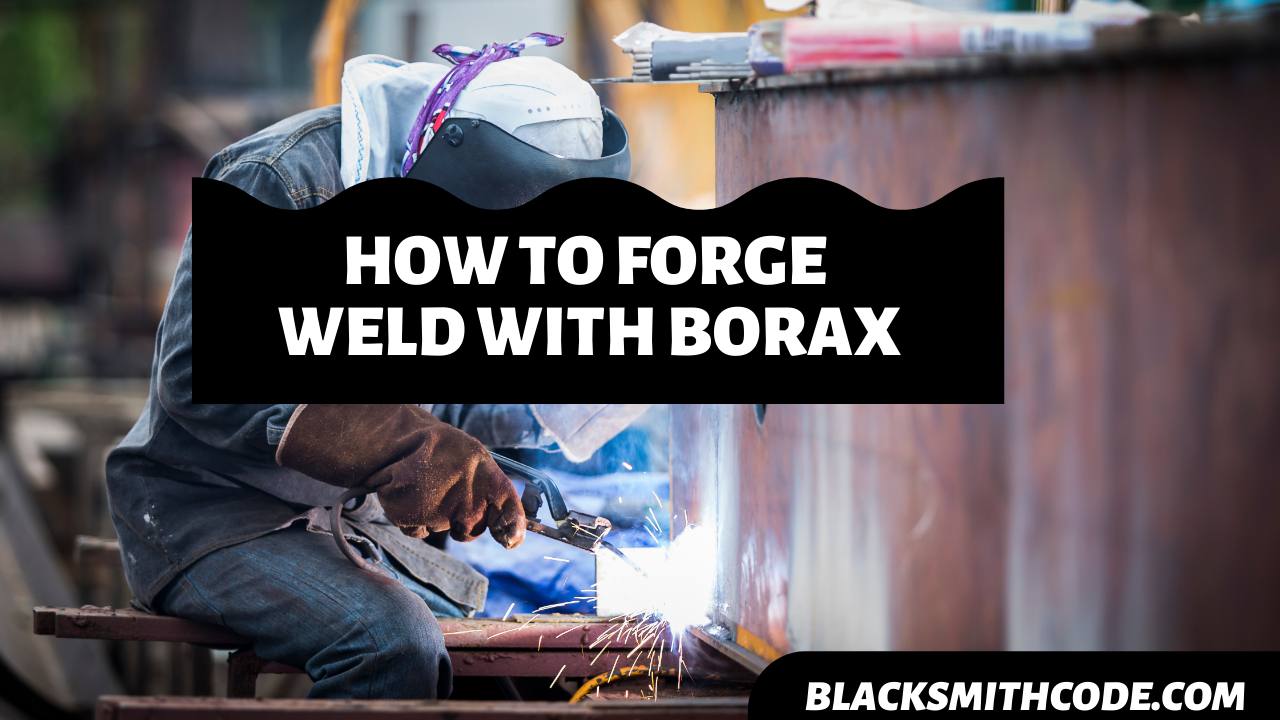Share this review
Have you ever evaluated the essential need for borax in blacksmithing? Or are you curious about how to forge weld with borax? Borax is one of the materials of high importance in blacksmithing. There are different types of fluxes, but borax appears to be the most common and most utilized.
Borax is commonly used for blacksmithing processes because it is cheap and relatively easy to use. Also, borax works perfectly as flux. These features account for its preference by blacksmiths.
There are also different brands of borax. The best ones are those without additives. The brands of borax without additives are usually cheaper, and they work well.
Borax usually comes in powdery crystals. The major use of borax in blacksmith is to prevent the scaling up of oxygen in the area you intend to forge. Also, it will help you reach a forgeable temperature in no time.
If you allow oxygen to scale up on the area of material you want to forge, it can result in a poor weld, weak joints, and improper heating.
Nevertheless, the use of borax is not as complicated as most people imagine it to be. It only requires basic application techniques and recognizing the right time to apply the borax for it to give you the perfect result.
Find the information on the practical guide on how to forge weld with borax below.
Instructions on How to Forge Weld With Borax
Step 1: Get Your Materials
There are different types of borax, and they are useful in the forge welding process of a variety of materials. Each type of material has a different forge welding temperature; therefore, the quantity of borax required also varies.
You can measure the quantity of borax you would get by the amount of material you want to forge weld. The most important thing is to ensure that you are getting enough borax to be sufficient for the process.
Step 2 Heating:
It is essential to heat the surface you want to forge weld before applying the borax. Although you might not heat the surface to forging temperature yet, slight heating makes it work better.
Step 3: Applying the Borax
Once your material is heated to the required temperature, then it is time to apply borax. There are two basic techniques for applying borax to the surface.
You can completely immerse the material in the borax. Alternatively, you can sprinkle the borax on the surface until it gets fully saturated.
Key Steps To Apply The Borax
- Pour the borax in a container and place it near the site where you would be applying the borax.
- Decide on the application technique you want to use.
- If you want to sprinkle borax on metal, make sure that you sprinkle enough to saturate the entire surface.
- If you are immersing the surface in a borax container, ensure that it is deep enough to cover the entire surface of the borax.
- You can decide to sprinkle the borax on the surface while still inside the forge.
- There is a possibility of the borax giving off bubbles on getting to the surface of the heated metal. This bubble is just the borax giving off the moisture in it.
- Keep on applying the borax to the surface until you have the desired result. The result is usually a shimmery glass coating on the surface of the metal.
- Keep applying more until you get to the yellow/orange welding temperature.
Note: It is best to make use of dehydrated borax. It is best because dehydrated borax will not give off bubbles. Also, the flux will enhance an in-depth penetration of the filler metals in the joint.
Similarly, using borax without moisture eliminates oxide faster; thus, it efficiently and effectively keeps out porosity and impurities from the joint.
Step 4: Finish up
The essence of applying borax during forge welding is to improve the welding joints. It will also prevent impurities from reaching the surface of the material.
Once you achieve this, you can move on with the rest of the forge welding process until you achieve your desired result.
FAQs About How To Forge Weld With Borax
Question
What is the function of borax in forging?
The major reason why blacksmiths make use of borax is to improve the quality of their weld. Borax usually prevents the surface being weld from oxidizing. The oxidation of surfaces can lead to poor weld and undesirable results.
Question
Is there any natural alternative for borax?
Blacksmiths use borax as a flux during forge welding. But before the innovation of borax, blacksmiths make use of other alternatives as flux. Fine silica sand is the oldest flux used for flux welding, and it is the main natural alternative for borax.
Question
Is the use of borax banned?
People make use of borax for other purposes outside blacksmithing. One of those uses is for it to serve as food additives. In some countries and locations, borax is a banned chemical for food additives over health concerns.
However, borax is not banned for use in the forge welding process. The reason for its free use in blacksmithing is because it is not ingested. Therefore, there are no health concerns.
Question
What is the melting temperature for borax?
Just like other blacksmithing materials, borax also has its melting point. The general melting point for borax is about 741℃. At this temperature, borax will form the glass cover for the surface you intend to weld.
Question
Can you forge weld without borax?
Yes, as long as you can get alternative flux, you can forge weld without borax. The essential thing is to use a suitable flux for your forge welding process. Forge welding without flux can be complicated and challenging.
Video
Precautions and warnings
The precautionary measures to take while forge welding with borax include;
- Avoid the production of bubbles as much as possible.
- Wear protective gears and take other blacksmithing safety precautions.
- Handle all hot metal with tongs not bare hands to avoid burn.
- Ensure proper ventilation of your workplace.





